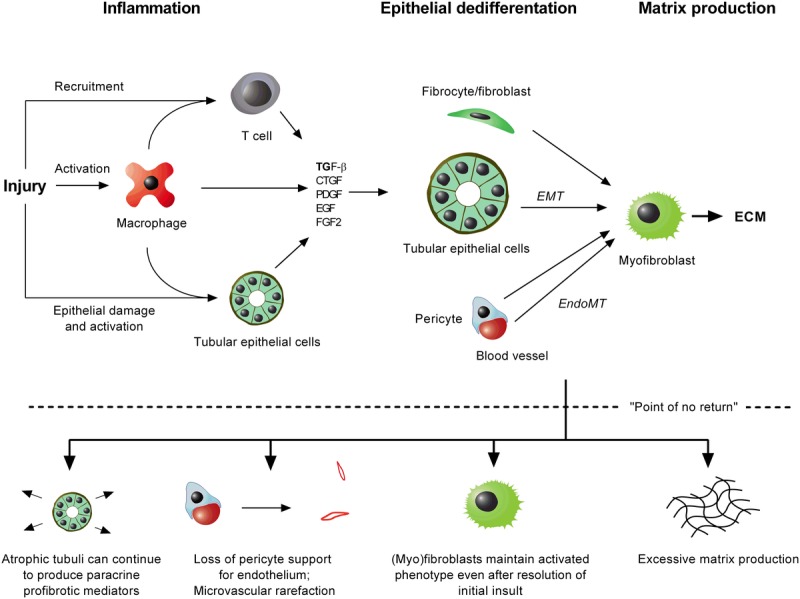FIGURE 1.

Simplified diagram of renal fibrogenesis. Most injurious stimuli result in an inflammatory cascade characterized by recruitment and activation of inflammatory cells, as well as activation of damaged epithelial cells. All of these cell types produce not only proinflammatory but also profibrotic mediators that result in consecutive waves of epithelial dedifferentiation. Resident and recruited mesenchymal cells (fibrocytes, fibroblasts, pericytes) and possibly also epithelial cells (tubular and endothelial) transdifferentiate to become contractile myofibroblasts that produce ECM. When the injury is severe and/or persistent, eventually a point of no return may be reached beyond which fibrosis progresses on a local level even after resolution of injury. EndoMT, endothelial-to-mesenchymal transition; FGF, fibroblast growth factor.
